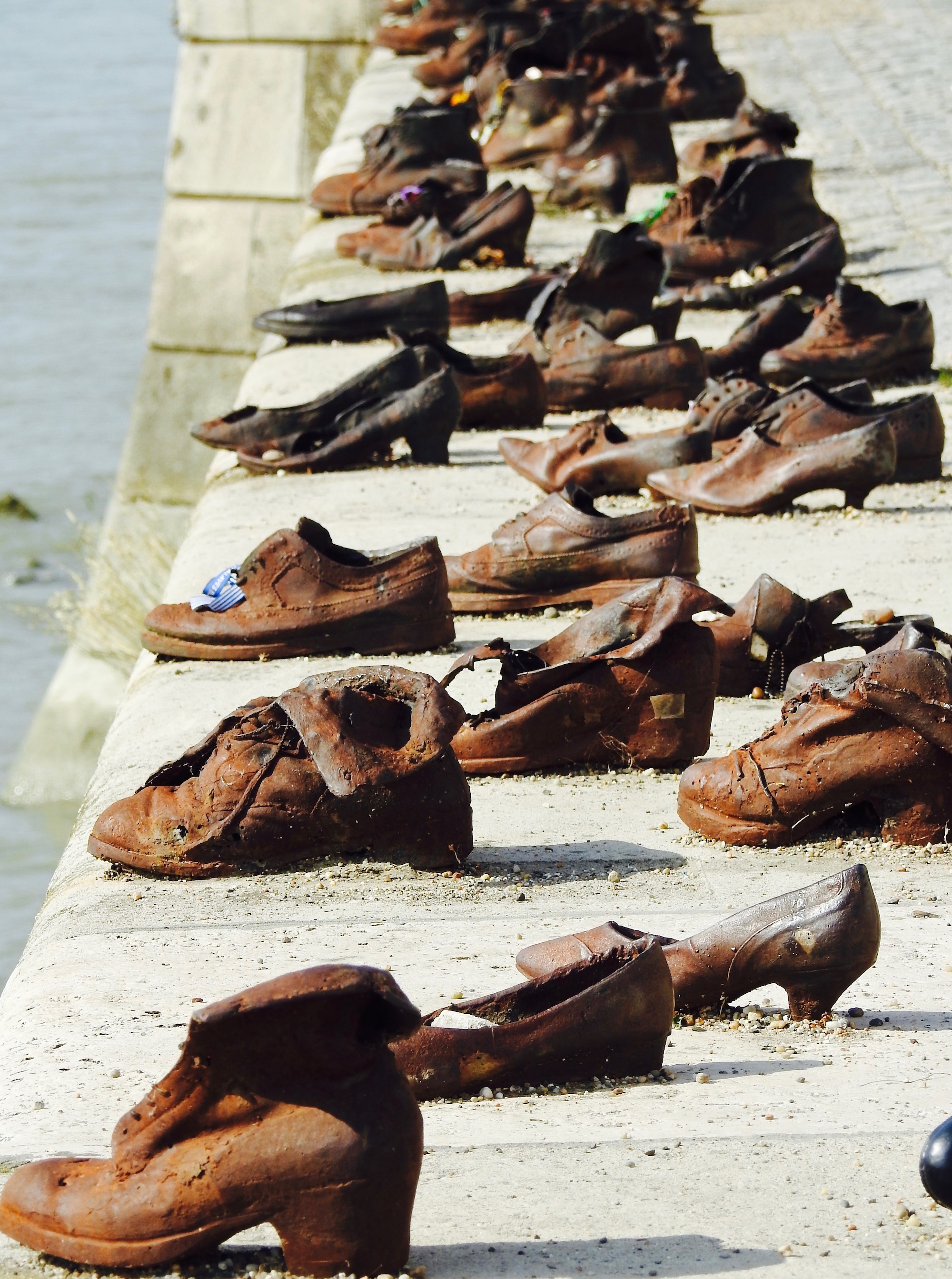
Exploring Budapest’s beauty through Heroes’ Square, Matthias Church, Chain Bridge, and the sad story of the iron shoes.
Heroes’ Square:
Seven Chieftains of the Magyars.
1896 is an important Hungarian date…it marks the one thousandth anniversary of the Hungarian state. Construction of Heroes’ Square began in 1896 and finished in 1900. The colonnade was rebuilt after damage from WWII.
Arpad, considered to be the founder of the Hungarian nation, is on horseback in front of the column which is topped by the statue of the Archangel Gabriel. In his right hand, Gabriel holds the Holy Crown of St. Stephen and in his left hand, he holds the Apostolic cross.
Matthias Church and Fisherman’s Bastion:
A Gothic style, Catholic Church, built and re-built several times. Saint Stephen originally built it in 1015. Destroyed and rebuilt in late 14th century and restored in the late 19th century. The church is named after King Matthias, but the statue in front of the church is of St. Stephen.
An important point regarding the church is the 150 year Turkish occupation when the church became a mosque. This brings us to the appearance of the Virgin Mary. In 1686, when part of wall collapsed, the statue of the Virgin Mary, which had been hidden, was revealed. Mary appeared to the Muslims causing them to believe God was on the side of the Christians thus causing the defeat and eventual expulsion of the Turks.
Frigyes Schulek was the architect who added the colorful, but controversial, diamond patterned roof tiles during the late 17th century.
The Pulpit:
Built of sandstone, the pulpit is decorated with statues of evangelists and Latin doctors of the church. St. Matthew is accompanied by an angel.
The Legend of the Raven with the Ring in its beak:
In the middle of the 15th century, Hungary desperately needed a leader. Matthias’ mother sent a raven with a ring in his beak to send for her fifteen year old son. He came to Buda and ruled for 32 years. He is the most beloved of Hungary’s kings. The symbol of the Raven with the ring is seen on the Coat of Arms and motifs through-out the church.
The beauty of Mattias Church is breath-taking:
Chain Bridge:
The Chain Bridge was built by a Scott, Adam Clark, in 1849. The lions that guard the bridge were not added until three years after the completion of the bridge.
The Shoes:
Between 1944-45, the Arrow Cross militiamen, lined up an estimated 3,500 people, many of them Jews, told them to take off their shoes and shot them. They fell into the Danube and were carried away downstream. Gyula Pauer, the sculptor, created sixty pairs of shoes from iron and placed them along the bank of the Danube in memory of those who were shot. Flowers are often left in the shoes as well as candy left in a young child’s shoes. A very moving memorial to those that lost their lives.
There is so much to see and so much history to learn about Hungary and Budapest. This is only a small taste of what the city has to offer.
About the Author:

Annie relaxing aboard a Viking River Cruise after a day visiting Budapest.
In 2010, Annie Coburn created Fab Placez. In 2014, she changed the name of her website to FAB Senior Travel to better define her target audience, mature travelers. In order to provide diversity of locations and topics for her subscribers, she publishes travel articles from other writers, as well as her own.
Website: http:// www.fabseniortravel.com

















